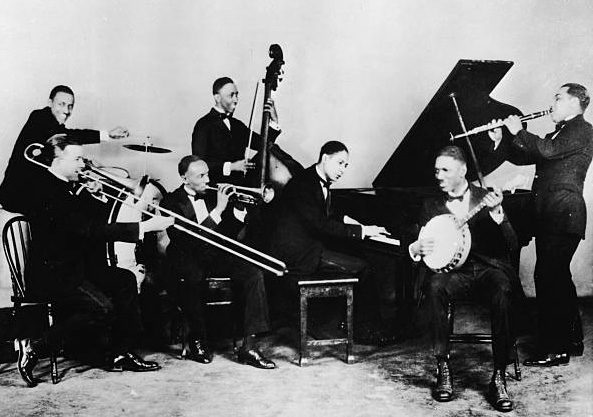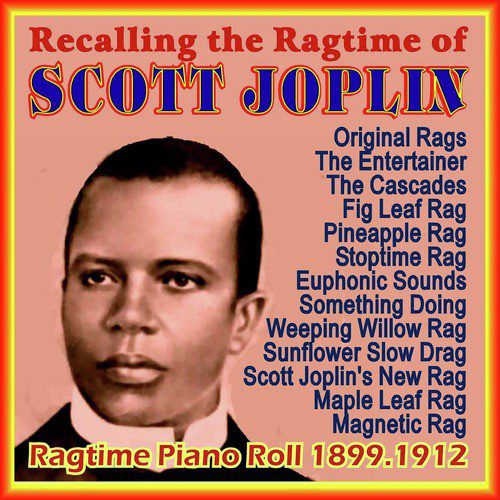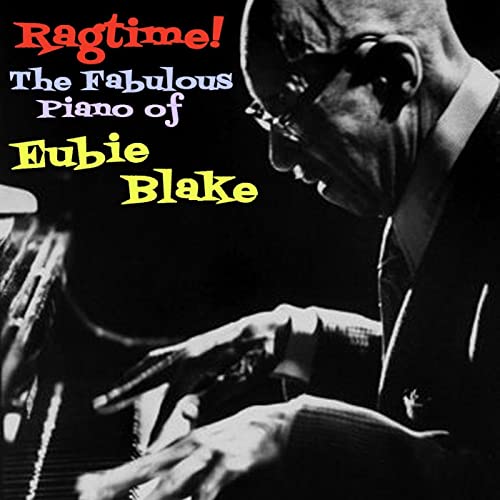Influential Men of Ragtime
Thesis & Introduction to Ragtime
Ragtime music was birthed with influences from jig and march music yet its influence in the music world led to the cultivation of jazz music. Without ragtime and composers such as Scott Joplin, James Scott, and Joseph Lamb, music such as jazz would not be the same as we know it today.
The music that was classified as “ragtime” first became popular during the mid-1890’s. However, it did not take long for its rhythm to win the hearts of many. Its popularity spread quickly due to published compositions called rags. Rags made it possible for music in this specific genre to be mass marketed at a low cost. While the term Ragtime has stuck for decades, it was not favored by composers who actually composed the music. People like Scott Joplin found the term to be “troubling” due to it being an appropriation by white people. This was a prevalent issue in America, however, Europeans seemed to accept Ragtime, its composers, and the blackness that came with the music.

Ragtime is usually multi themed. An example of this is the compositions of Scott Joplin. His pieces are perceived to follow patterns such as AABACCDD. The piece begins with an A-flat major, followed by the C, introducing the trio, and finally the D-flat allows the piece to circle back to the A-flat major. This rhythm is a common syncopated rhythm in Joplin’s work. Ragtime as a whole lacked complex rhythm, rather it stuck to simple syncopations and catchy rhythms. However, syncopations were always played by the right hand. Recapitulations were not only a pattern, but mandatory when playing ragtime music. During the twenty years (1900-1920) that ragtime was popular, it cultivated the world of music, changing it for the better. Although new genres started to come along during the 1920’s, ragtime continued to be performed and recorded. It also influenced the genre of jazz which led to the revival of ragtime in the 1940’s. Classic ragtime music such as Joplin’s “The Entertainer”, continued to influence composers for decades. Ragtime has now become a classical genre that remains popular with both composers and audiences.

Scott Joplin and James Scott
Scott Joplin, an American composer and pianist who was dubbed the “lord of ragtime” around the turn of the 20th century, was born in Texas in 1867 or 1868 and passed away in New York City on April 1, 1917. Despite the fact that his exact birthdate and location are unknown, Joplin spent his youth in northern Texas. His family had relocated to Texarkana by 1880, where he took piano lessons from local instructors. Midway through the 1880s, Scott Joplin began touring the Midwest; in 1893, he gave a performance at the World’s Columbian Exposition in Chicago. In 1895, he moved to Sedalia, Missouri, where he attended the George R. Smith College for Negroes to study music with the intention of pursuing a career as a concert pianist and classical composer. Due to the success of his debut songs, he relocated to St. Louis in 1900.Joplin’s reputation as a composer is based on his well-known piano ballads, such as “Maple Leaf Rag” and “The Entertainer,” which were released between 1899 and 1909, as well as his opera Treemonisha, which was released in 1911 at his own expense. When an Atlanta, Georgia, group performed Treemonisha on Broadway in 1972, it was highly appreciated. In the 1970s, interest in Scott Joplin and ragtime was sparked by the use of his music in the Academy Award-winning score for the movie The Sting.
James Scott, a prominent ragtime musician, was born in Neosho, Missouri. He trained himself to play the piano as a child. Scott worked as a shoeshine boy after his family relocated to Carthage, Missouri, at the beginning of the 20th century. He also started performing professionally, frequently playing the piano and steam pipe organ at fairs and theme parks in the area. He held positions at Dumar’s Music Store from 1902 until 1914 as a window washer, picture framer, clerk, and song plugger. He also started writing and publishing ragtime songs at this time. “The Fascinator” and “A Summer Breeze” (1903) were two of his earliest hits (1903). He traveled to go and see Scott Joplin in St. Louis in 1906. Although they never collaborated, Joplin introduced Scott to John Stark, who later served as his publisher and gave the majority of Scott’s works titles.With its frantic leaps, upbeat rhythms, and rich, ominous tonalities, Scott’s pieces contributed to the development of the traditional ragtime sound. “Frog Legs Rag” (1906), “Great Scott Rag” (1909), “The Ragtime Betty” (1909), “Sunburst Rag” (1909), “Grace and Beauty” (1909), and “Hilarity Rag” (1909) are some of his most significant ragtime songs from this period. Despite the fact that Scott did not record any piano rolls, there is evidence that he was a skilled pianist in addition to being the author of numerous ragtime hits.

Joseph Lamb
In 1887, Joseph Francis Lamb was born in the New Jersey suburbia of Montclair Township. Joseph Lamb was the youngest and fourth child of Irish immigrants James and Julia Lamb. He grew up with his brother and two sisters in a large house that his father, a carpenter, had built. He learned how to deal with wood from his father, and he got a love of music from his mother, a former choir member. Lamb’s two siblings Katherine and Anastasia, who both took professional piano lessons, were as his first teachers of music. Young Joseph would spend hours with them playing the family’s parlor piano or reading issues of The Etude, a renowned journal for musicians that his sisters subscribed to, instead of doing his homework. It would help Lamb refine his piano and composition abilities, educate him on many musical genres, and inspire him to write pieces like his 1915 “Ragtime Nightingale,” which was influenced by Ethelbert Nevin’s “The Nightingale’s Song.” Lamb’s career was largely unrelated to the music business, with the exception of a brief spell working as an arranger and song plugger in New York City’s Tin Pan Alley. He delivered animal hides for a company that made leather products in his late teens. He began working as an accountant with L. F. Dommerich & Co. Inc. around the age of 27 in 1914, and he remained there until his retirement in 1957. Lamb never sought out musical success, preferring to put his family first. However, Lamb is still considered apart of the “Big Three” ragtime musicians along with Joplin and Scott.
Conclusion
There is no denying that each of these ragtime musicians left a monumental mark on the world of jazz. Each composer added their own style to the genre, allowing it to flourish and become the soundtrack to the early 1900’s. Ragtime was so influential that it even went through a “rebirth” in the 1970’s due to performers and movies. Ultimately, ragtime music was one of the most influential facets of jazz and cultivated the entire genre.


